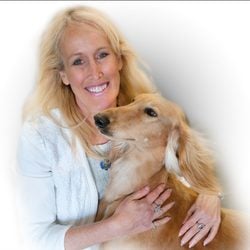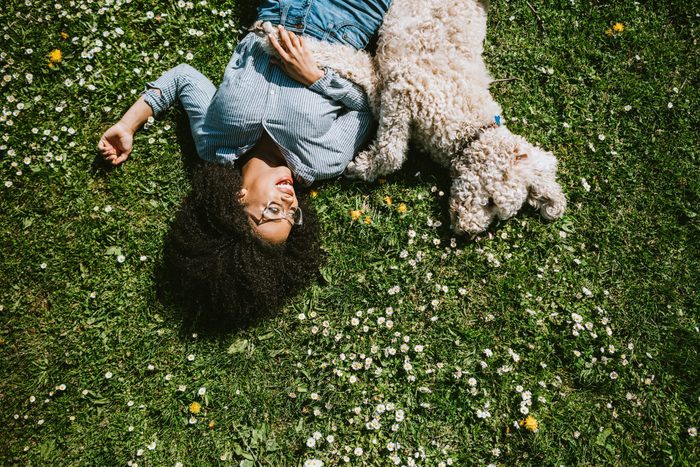
The perfect low-maintenance dogs
Welcoming any animal into your family is a big commitment, but some popular dog breeds are more demanding than others. Take smart and super-focused Belgian Malinois for example: They might be impressive masters of canine tricks, but they’re certainly not low-maintenance dogs. These high-energy, driven dogs need niche homes that can offer the training and mental and physical enrichment they need. Apartment dwellers, busy families, retirees or first-time owners might be looking for a more laid-back breed—and maybe one they don’t have to spend hours grooming or vacuuming up after.
While low-maintenance dogs have a reputation for being easier to care for, that’s not to say you don’t have to put in the work. “All dogs require training, veterinary care, some form of exercise, human interaction and commitment to care for them throughout their lives,” says Erin Askeland, an animal health and behavior expert and certified professional dog trainer.
And don’t forget that every dog has its own personality. “With any dog, regardless of breed, their individual needs will vary. As with people, some dogs are more active, affectionate or stubborn than others,” says veterinarian Jacqueline Brister, DVM. “It’s important to understand that breed specifics really are just guidelines, and owners need to try and stay attuned to their pets to help meet their emotional and physical needs, especially as they grow and move through life stages.”
What makes a dog breed low maintenance?
When we talk about low-maintenance dog breeds, we don’t just mean canine couch potatoes. We crafted this list looking for that sweet spot in terms of temperament, trainability, energy levels, grooming requirements and overall health. Unsurprisingly, it doesn’t feature any always-on-the-go endurance athletes (like Belgian Malinois), supershedders (like golden retrievers) or typically hard-to-train dogs (like Siberian huskies).
Read on for 15 low-maintenance dogs that are easier to care for. Compiled with the help of three canine experts, this list will help you find a four-legged friend that’s a good match for your busy lifestyle.
Get Reader’s Digest’s Read Up newsletter for more pets, humor, travel, tech and fun facts all week long.
About the experts
|
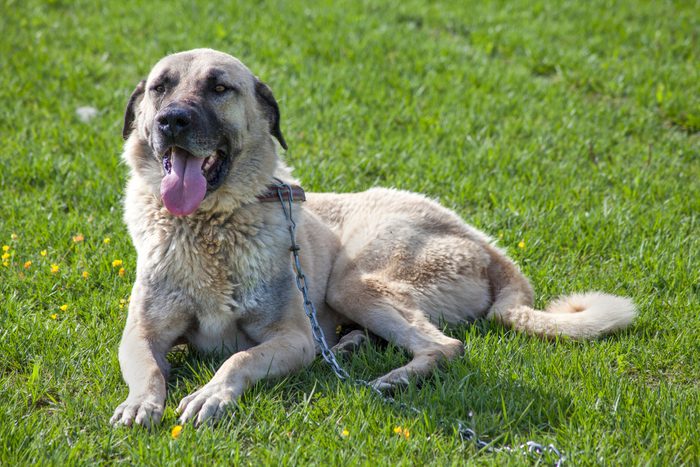
Anatolian shepherd dog
It’s fair to say that large dog breeds can be more work than toy types. They take up more space, eat more food, often need more exercise and can have more health issues. But as far as big breeds go, Anatolian shepherds are relatively low-maintenance dogs if you live in a rural location. They’re calm, pretty low-energy pups that love spending time outdoors. Long hikes aren’t a necessity, but having a large, secure yard is a bonus. They shed their thick coats seasonally, but the fur fest won’t be extreme like it is with a husky or German shepherd. “Genetically, they tend to be a pretty healthy breed and aren’t prone to common large-breed issues like hip dysplasia or bloat,” says Dr. Brister.
The biggest challenge comes from managing their guarding instincts—Anatolian shepherds were originally bred for herd protection. “It’s a working breed and tends to be on the protective side,” she says. But with early and ongoing socialization and positive training, these loyal dogs make for responsive and adaptable family pets.
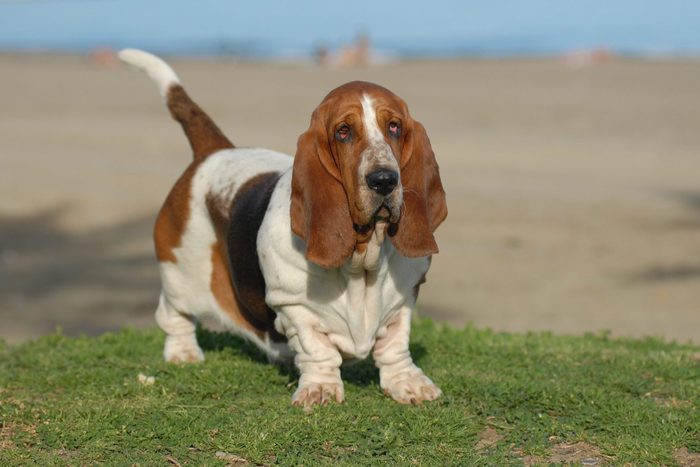
Basset hound
You can’t fail to fall in love with this low-key, low-slung, floppy-eared dog. “Basset hounds are super laid-back and tend to be great with kids and other pets,” Dr. Brister says. These dogs are unlikely to beg for big walks—sometimes it can be a challenge to get these stubborn characters to do enough exercise. Instead, slow, sniffy walks to satisfy their keen sense of smell are ideal.
While these mild-mannered dogs are great to have around the home, they do like the sound of their own voice. If you live next to neighbors, you might need to train your basset hound to keep its barking at bay. Their short coat doesn’t need much attention, but Dr. Brister points out that the basset hound’s droopy ears and wrinkly skin can be prone to infections.
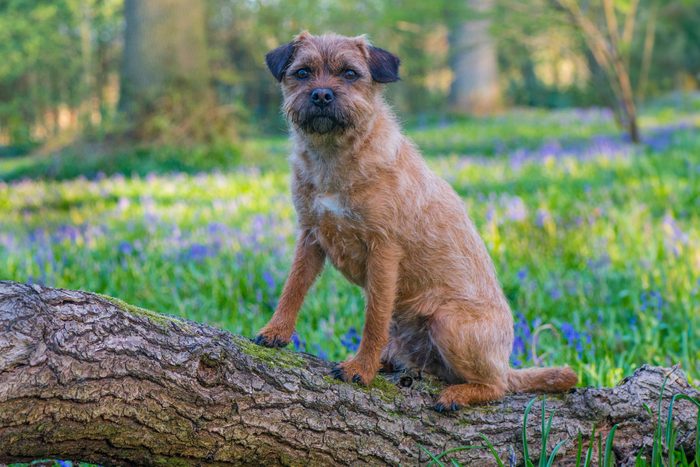
Border terrier
Terrier breeds are often spirited, scrappy and stubborn, with strong prey drives. In other words: not typically low-maintenance. However, the unassuming border terrier is one of the most affable and undemanding of this group. According to Dr. Brister, these affectionate little dogs tend to be good with kids and are popular family pets. They usually get along well with other dogs too, provided they’re appropriately socialized.
Yes, border terriers still love chasing squirrels and need more than just a short stroll around the streets, but they’re typically easy to train and love sofa snuggles. Borders have easy-to-maintain rough coats that need stripping only twice a year, and the breed is hardy with few major health concerns.
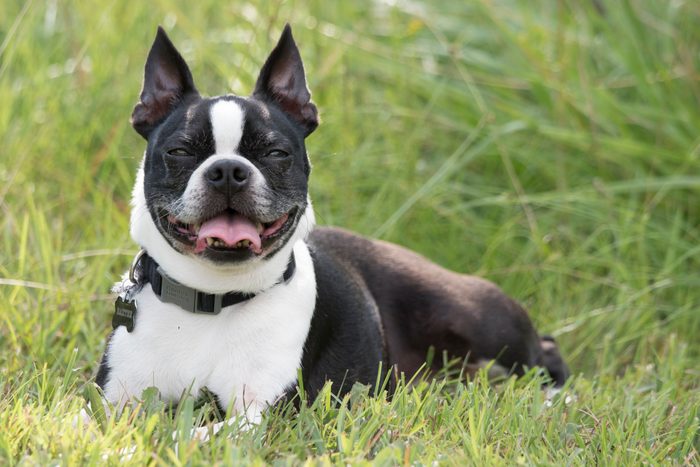
Boston terrier
Are you searching for a fun-loving, smart, adaptable family dog? Look no further than the kid- and pet-friendly Boston terrier. These dinky black-and-white dogs adapt well to apartment and city living. They aren’t elite athletes with major exercise needs, and their short coats require minimal maintenance. Because Bostons were bred to be companions, they’re great pets for home workers or retirees. But you won’t want to leave yours alone for too long—that can lead to a stressed or bored Boston and unwanted behaviors.
“From a health standpoint, as a brachycephalic breed, with their cute, smushed faces, they tend to have upper respiratory and breathing issues, although they’re generally not as severe as some of their breed cousins, like the French and English bulldogs,” says Dr. Brister You’ll want to be extra careful about keeping them cool on hot summer days.
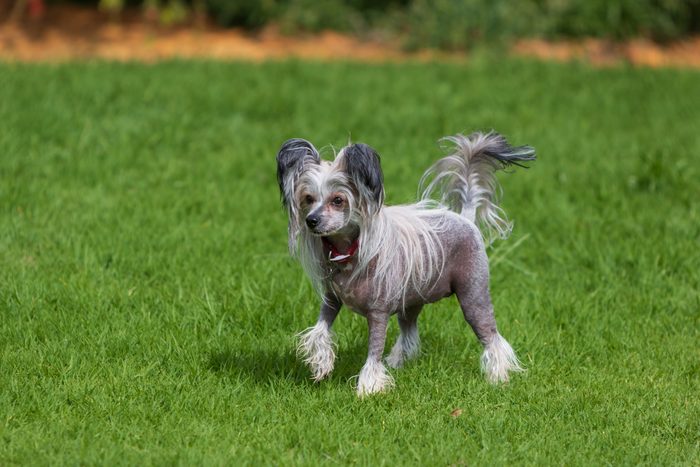
Chinese crested
Head-turning Chinese cresteds, with their flowing manes and prancing gait, have more going for them than just their unique looks. These smart dogs excel at agility, but they’re equally happy cuddling on the couch with family. Playful, friendly and adaptable, these petite pups fit into most homes and lifestyles.
While certain Chinese cresteds are lumped in with hairless dogs, they aren’t completely coatless. The hairless variety has tufts of fur on its head, ankles and tail. Still, these dogs don’t shed much, and grooming isn’t too onerous. Skin care is essential, though. “Chinese cresteds are prone to sunburn on the hairless or sparsely haired regions of their skin,” says Dr. Brister. Stocking up on doggy-safe sunscreen is a must. As for the less common powderpuff variety, it has soft locks all over, so you’ll need to brush it daily.
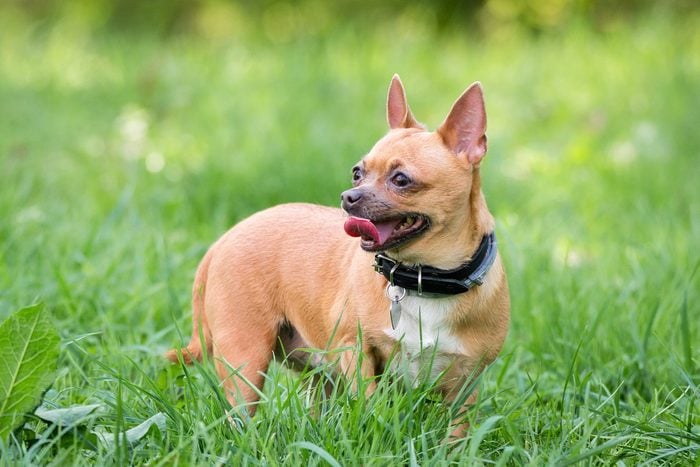
Chihuahua
Chihuahuas are portable pups that suit apartment living. They don’t need long daily hikes, and it’s easy to bring them on city outings in dog slings or bike baskets. “Despite their small size, they commonly display confident and spirited personalities,” says veterinarian Kelly Cairns, DVM, vice president of medical excellence and education at Thrive Pet Healthcare. “Chihuahuas often form strong bonds with their owners and may be fiercely loyal.”
Lovers of this breed often refer to Chihuahuas as big dogs in tiny dog bodies. It’s easy for spunkiness to turn to snappiness if you don’t set boundaries for these pocket-size pooches. Just because they’re teeny weeny, doesn’t mean you can slack off on early socialization and ongoing training. The good news: Chihuahuas are smart and happy to work for tasty treats.
You won’t have to worry about time-consuming grooming duties with short-coated Chihuahuas, but you’ll have more work with the long-haired type. While this is one of the longest-living dog breeds, it can have some of the same health issues as other toy breeds, such as knee problems and collapsing tracheae. Start toothbrush training early to minimize the chance of dental disease, and walk your Chihuahua on a harness to protect its itty-bitty neck.
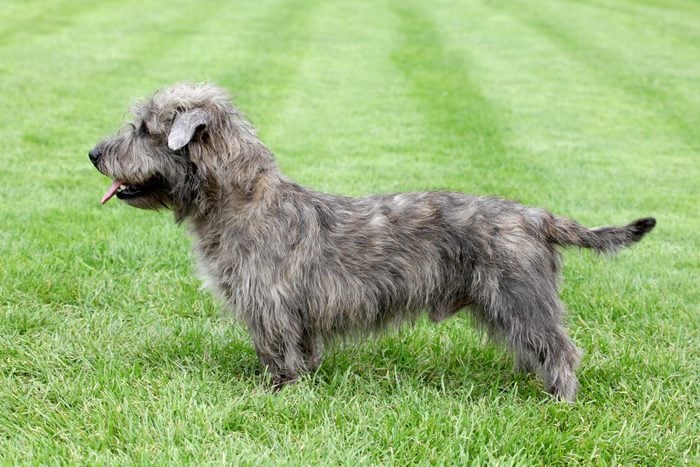
Glen of Imaal terrier
It’s surprising that the hardy, bright, good-natured Glen of Imaal terrier is such a rare dog breed. “They’re known to often have calm and gentle demeanors and may be a good choice for households with other pets or children,” says Dr. Cairns. She explains that their energy levels tend to be moderate—these low-slung pooches have stubby little legs—and they can adapt to various living situations.
Unflappable Glen of Imaal terriers usually aren’t yappy like some of their terrier relatives, and their wiry coats don’t shed much. While playful, these independent souls are often happy to entertain themselves if you offer a range of rotating toys.
One terrier trait these dogs retain is a love of digging. Providing a sandbox or other appropriate outlet for this instinct will help prevent holes in your lawn or flower beds. And like other terriers, they aren’t always fans of unfamiliar Fidos, although proper puppy socialization can increase the chances they’ll get along with other dogs.
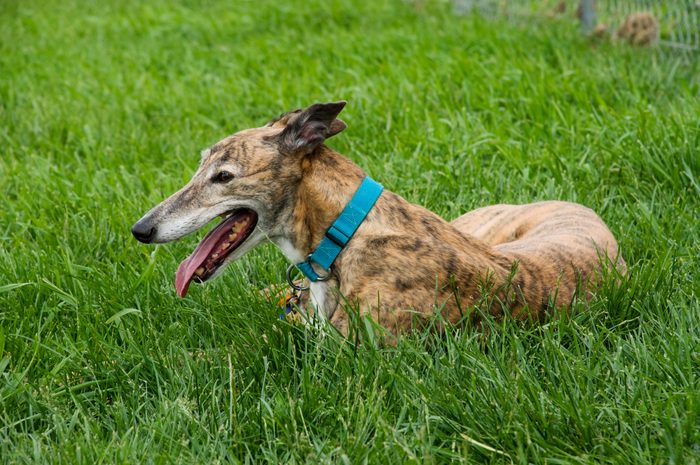
Greyhound
The greyhound’s large size and notable racing and hare-coursing skills might have you thinking twice about whether this is the dog for you. But as Dr. Cairns explains, these gentle and affectionate dogs are sometimes called canine couch potatoes because of their love of lounging. “Despite their athletic build [and the fact that they’re one of the fastest dogs in the world], they may have low to moderate energy levels, requiring only moderate exercise, which can be ideal for busy or less active owners,” she says. And it’s a bonus that your couch won’t be smothered in hair—the short coats of these dogs don’t shed excessively.
Because of their high prey drive, it’s best to limit off-leash sprints to secure, fenced-in spaces. A puppy pullover is an excellent investment for cold winter walks—lithe greyhounds don’t have much insulating body fat, so they tend to get chilly.
Potential owners should know that greyhounds can be sensitive to certain anesthetic drugs, and their deep chests make them more prone to bloat (stomach torsion). However, a good veterinarian will discuss strategies to minimize any risks.
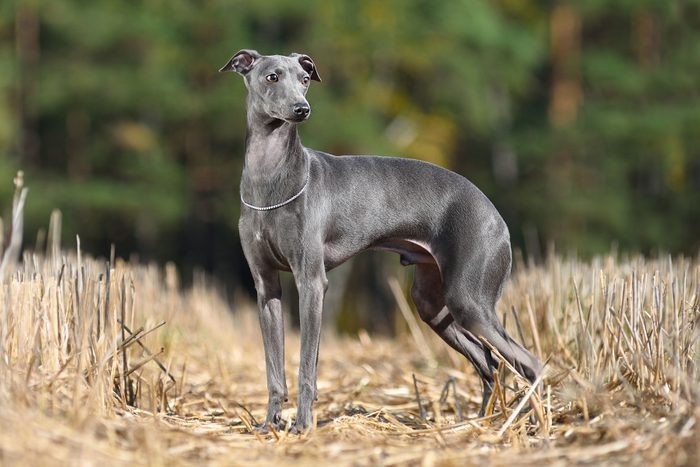
Italian greyhound
These petite, long-nosed dogs invariably and effortlessly charm their way into the hearts of their families. “Italian greyhounds are often known for their affectionate and sensitive natures,” says Dr. Cairns. Slotting into just about any home, they don’t shed much or take up lots of space, and they typically love kids and other canines.
Playful and perky, Iggys (yep, they win for cutest breed nickname) love to let off steam by sniffing their way through a walk or racing off-leash in a secure space. They might be small and not bred to hunt like their bigger greyhound relatives, but these agile sight hounds still love to chase furry critters.
Dr. Cairns explains that Italian greyhounds often bond deeply with their owners. A home where someone is around most of the day to offer company and cuddles is best. These dogs aren’t lovers of cold, wet weather—a cozy coat is a must for winter walks.
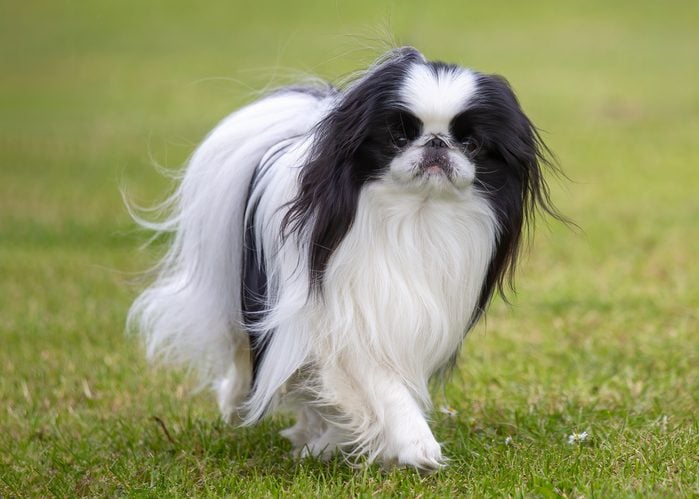
Japanese Chin
Centuries ago, Japanese and Chinese royalty bred Japanese Chins to be companions, and they remain noble, agreeable characters. “They’re known for their affectionate and loving natures,” says Dr. Cairns. She suggests their calm and gentle temperaments make them a good match for households with children and seniors, and their low exercise requirements make them suitable for apartment living.
These little dogs are big on personality—look out for their playful spinning, sassy snorting and quirky, catlike habits, including snoozing on the backs of sofas and self-grooming. Their long, silky single coat isn’t prone to matting; simply brush it once or twice a week.
The biggest concerns with this brachycephalic, smushed-faced breed are breathing issues and doggy heatstroke. Limit your Chin’s outdoor time when the mercury rises.
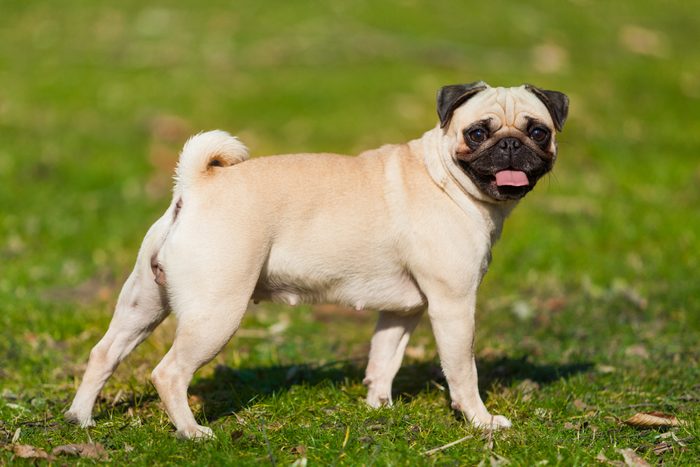
Pug
Some enthusiasts consider playful, personality-filled pugs to be the ultimate low-maintenance dogs. Mellow with a touch of endearing mischievousness, these adaptable dogs fit in with most families. They make friends with everyone, including kids and other canines, and their rather nonathletic physiques mean a short walk followed by snuggle time is often enough to keep them content.
“This dog may be low maintenance from an exercise and training perspective, but not health,” says Askeland. Another brachycephalic breed, they’re prone to respiratory issues. Researching responsible breeders reduces the risk of major health concerns, but these dogs don’t do well in hot weather.
Pugs are also first-class foodies, prone to piling on the pounds. Yes, we know their puppy dog eyes are super cute, but don’t cave in to their begging. Obesity increases the risk of breathing and joint problems, so watch out for the warning signs your pet is overweight.
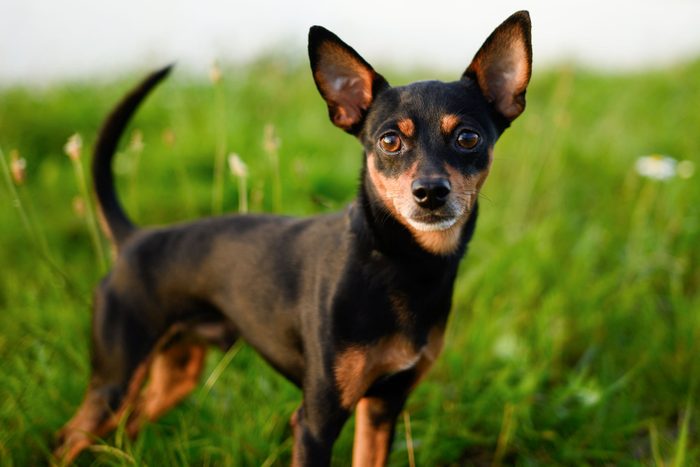
Russian toy
Many Russian dog breeds have strong working drives and independent natures. That’s not the case with the sweet, smart Russian toy. In the 18th century, this tiny terrier was a popular lap dog for the aristocracy in its home country. Similar in size to a Chihuahua, the Russian toy tends to be easier to train and more sociable. “They’re eager to please their families, but being terriers, they can also be tenacious,” says Askeland. “Consistent and regular positive reinforcement training methods work best with this intelligent breed.”
Although Russian toys are lively little dogs, their size means they don’t need long walks, and they’re hardy and healthy. Russian toys can have a short, smooth coat or a long one; neither shed excessively nor need an intensive grooming regime.
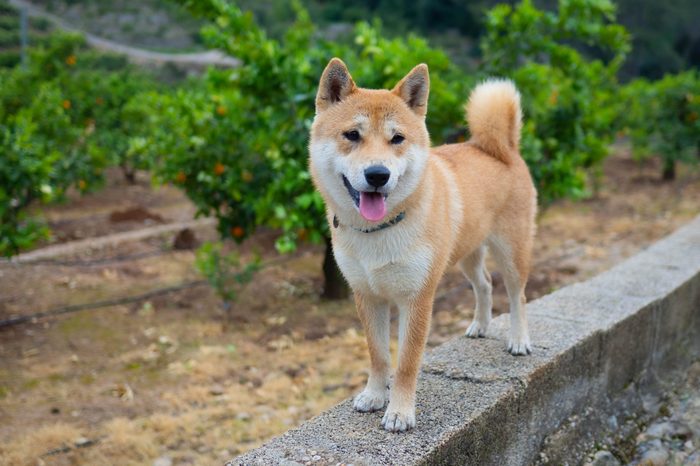
Shiba Inu
The healthy, long-lived Shiba Inu is the most popular breed in its home country of Japan. These are clean, calm, quiet dogs that rarely bark. Shibas aren’t needy pups that will melt down when you leave the room without them. And while they’ll happily head out for a hike, they’re equally content with a gentle stroll in the park.
Askeland explains that Shiba Inus are loyal but independent and strong-willed. When training them, you might need more patience … and plenty of tasty treats. She also recommends secure fencing in your yard, as they can be wanderers.
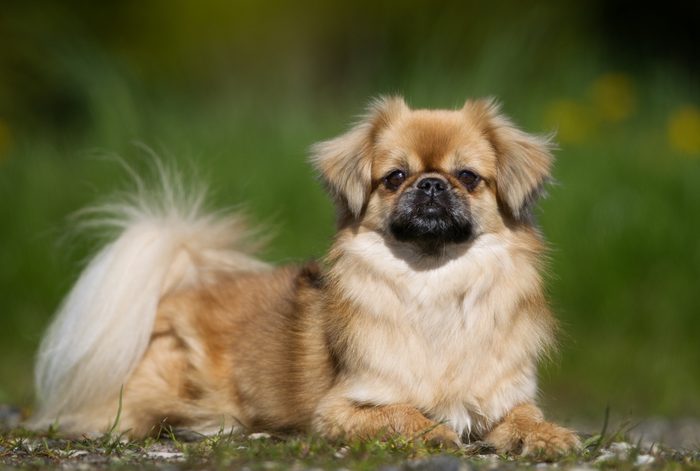
Tibetan spaniel
These dogs aren’t relatives of traditional high-energy hunting spaniels. Instead, Tibetan spaniels were originally companions to the monks and lamas of their East Asian homeland. It’s no wonder they’re considered low-maintenance dogs: They spent much of their time sitting on or beside the meditating monks. Today, these affectionate, even-tempered pups will happily hang out on your lap or on the back of a sofa. “Tibetan spaniels are adaptable dogs that can thrive in various living situations,” says Askeland. “They have moderate energy levels and are eager to learn.”
Despite earning the nickname “little lion” for its fluffy leonine mane, the Tibetan spaniel isn’t an excessive shedder, though regular brushing is necessary. Another must? Early training—traditionally monastery watchdogs, Tibbies can go overboard with alert barking if it’s left unchecked. And be sure to get your dog comfortable with toothbrush time. “Although generally healthy, Tibetan spaniels may be prone to dental issues,” Askeland says. “Regular dental care is essential for their well-being.”
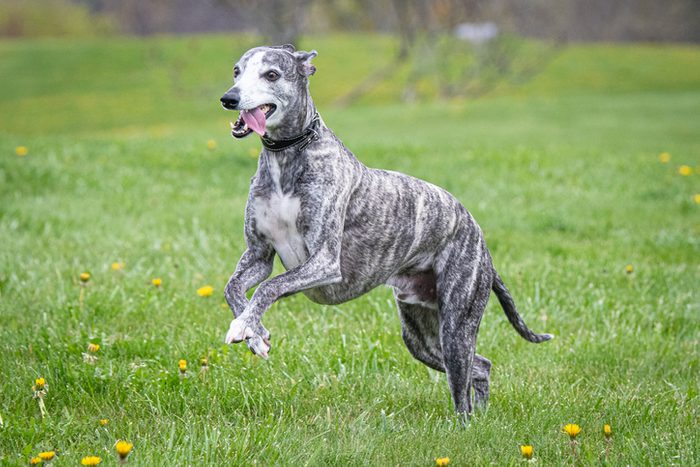
Whippet
You’d be forgiven for confusing this long, lithe dog with a greyhound—it’s an easy mistake to make. Willowy whippets were bred from greyhounds and, like greyhounds, are low-maintenance dogs from the sight hound group. “Whippets are gentle and affectionate dogs known for their athleticism and speed,” says Askeland. “They’re well-suited for homes with secure, fenced yards where they can run freely, [and they’ll] adapt to apartment living, provided they get opportunities to exercise with their family.”
Don’t let those exercise needs fool you into thinking you’ll be active nonstop should you adopt a whippet. “Despite their lively bursts of energy, they’re generally calm and well-mannered indoors,” she says. Whippets are quiet, sweet, petite and hearty hounds that don’t need hours of grooming to keep their sleek coats looking good. You’ll need to get a winter dog coat for these cold-hating hounds, and you might have to work on curbing their cat-chasing habit.
Why trust us
At Reader’s Digest, we’re committed to producing high-quality content by writers with expertise and experience in their field in consultation with relevant, qualified experts. For this piece, Gemma Johnstone tapped her experience as a longtime pet writer, owner of a decade-long dog business and volunteer at dog rescue organizations. Then Caroline Coile, PhD, an award-winning journalist specializing in canine breeds, health and science, gave it a rigorous review to ensure that all information is accurate and offers the best possible advice to readers. We verify all facts and data, back them with credible sourcing and revisit them over time to ensure they remain accurate and up to date. Read more about our team, our contributors and our editorial policies.
Sources:
- Jacqueline Brister, DVM, veterinary contributor for Embrace Pet Insurance, practicing small-animal veterinarian and veterinary medical writer; email interview, April 5, 2024
- Kelly Cairns, DVM, vice president of medical excellence and education at Thrive Pet Healthcare; email interview, March 29, 2024
- Erin Askeland, certified professional dog trainer at Camp Bow Wow; email interview, April 1, 2024
- PLOS One: “Dog size and patterns of disease history across the canine age spectrum: Results from the Dog Aging Project”
- American Animal Hospital Association: “Adverse reactions to anesthesia: It’s not just greyhounds”

